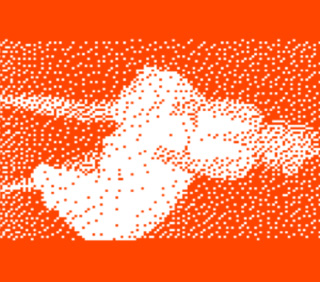Splash art originated in the 1940s in comics, where the term referred to a full page of visuals at the front of a book. Pages were designed to engage the reader's imagination along the lines of the comic's broader concept, while standing independent from the narrative. In the late 1990s, when the widespread use of the application Flash opened up new possibilities for animation and interactive media, the idea of the splash page migrated to web design. Online splash art brought visual excitement to a webpage when low modem speeds made it impractical to post large or moving images amid a site's textual content.
Rhizome introduced splash pages to its web site in 1998 in order to display artwork with greater immediacy....
Rhizome introduced splash pages to its web site in 1998 in order to display artwork with greater immediacy....
Launch Project 
 a pavu.com splash Mix, 2001
a pavu.com splash Mix, 2001
About
An outline of the iconic image of Marilyn Monroe in a white dress from The Seven Year Itch flips and blinks, as a giant fan flickers at the opposite edge of the page—presumably the source of the breeze that disturbs Monroe’s outfit. The images are superimposed on pastel backgrounds—shades of orange, pink, and yellow are selected randomly whenever the page loads—and a junky, distorted sample makes an awkward soundtrack. Pavu stands for Popular Arts Value Upgrade, a French collective active since 1999 known for the irreverent, cryptic humor that characterizes this splash page.
http://pavu.com
http://pavu.com